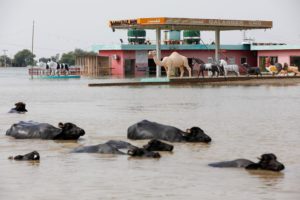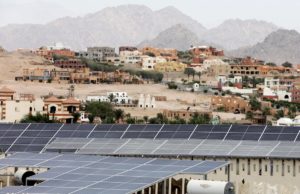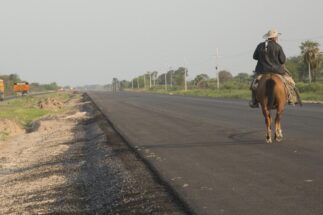In 2015, Asghar Leghari, a tax lawyer and farmer, successfully sued the government of Pakistan. The Lahore High Court ruled that the state was failing to implement national climate change policies, impacting its citizens’ constitutional right to life.
In his judgement, then chief justice of the court Mansoor Ali Shah referred to the concept of climate justice, and recognised that constitutional rights like right to life and human dignity encompass the right to a healthy and clean environment. The judgement resulted in the constitution of a Climate Change Commission for the province of Punjab to ensure the execution of climate change policies, as well as a draft climate change policy for the province.
The Intergovernmental Panel on Climate Change’s (IPCC) latest report on adaptation, released in February 2022, cites Leghari v Federation of Pakistan as a leading case in one of “a rising number of case laws addressing the state’s failure to implement adaptation policies and resultant climate change litigation”.
What was unique about the Leghari case, says Lahore-based environmental lawyer Ahmad Rafay Alam, was that it spoke about the principle of climate justice and by doing so, provided “a precedent to put my foot on if I were ever to push this any further”.
However, Alam adds, the case was “demonstrably” not the start of a huge change in climate justice litigation: in the years since the judgement, he says, a significant amount of environmental litigation has happened in Pakistan, but none has “circled right back round to principles of climate justice that were talked about in the Asghar Leghari case”.
Around the world, climate change litigation is growing, although “in a much smaller proportion in developing countries”, says the Intergovernmental Panel on Climate Change’s (IPCC) report on climate change mitigation, which was published this April. As of June, there are 2,002 climate litigation cases globally, of which 88 are from the Global South, according to a report by the Grantham Research Institute (GRI) at the London School of Economics. In contrast, just over 800 cases were filed between 1986 and 2014, the report points out.
The Sabin Center at Columbia Law School and Grantham Research Institute (GRI) at the London School of Economics maintain databases of climate change litigation cases. For a case to qualify as climate litigation, “climate change law, policy, or science must be a material issue of law or fact in the case”.
The IPCC mitigation report states that courts play an “active role for climate governance in democratic political systems”. Last month, lawyers from more than 20 organisations warned ahead of COP27 that governments will “face further legal action” if they do not do more to curb greenhouse gas emissions.
But how much difference does successful litigation like that brought by Asghar Leghari make in compelling governments to act on climate change – and how is this playing out in South Asian countries?
Why people are turning to the courts now
The majority of litigation on mitigation action is brought against governments, according to the IPCC, which says this highlights the failures of governments’ executive branches.
Climate action at both the national and international level has been slow, points out Joana Setzer, an IPCC litigation chapter author and an assistant professorial research fellow at the GRI. This slow progress is one driver of litigation. Another driver is momentum: favourable judgements spur further litigation, like the 2019 Urgenda case in the Netherlands, where the court ordered the state to take on a more ambitious emissions reduction target of at least 25% compared with 1990.
Alam agrees, describing the “reverberations” from cases such as Urgenda felt by the international legal community.
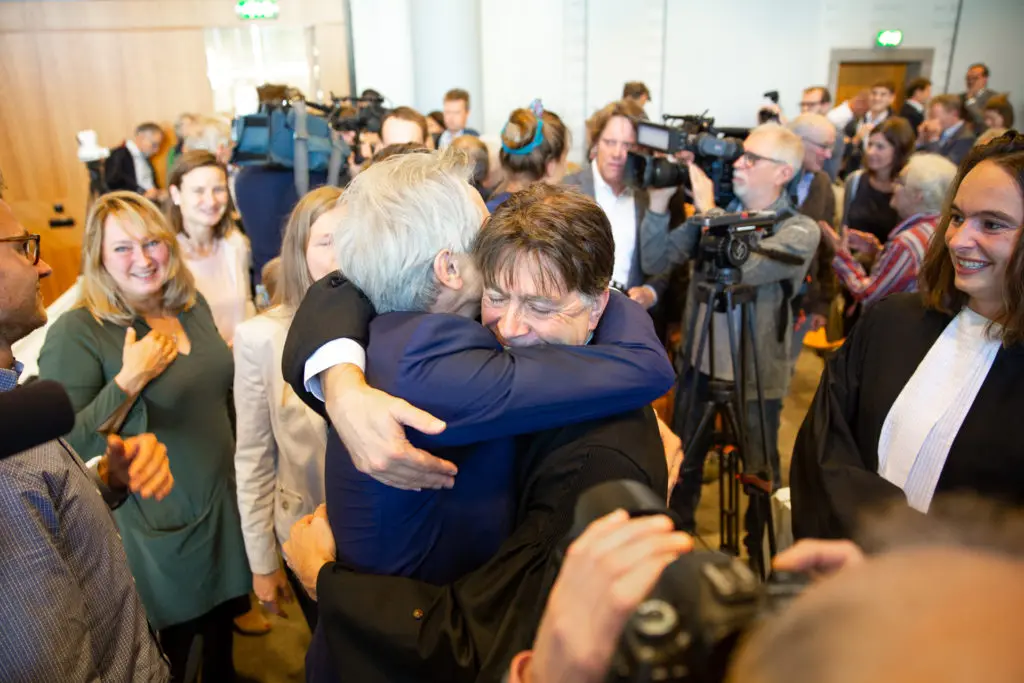
He says the Asghar Leghari case, for example, “throws open the great potential of the legal system… to protect the rights of people against fossil fuel polluters; it opens up the possibility that this system, which is essentially derived to protect private property rights, does have a function beyond that”.
Litigation is expected to increase as climate attribution science matures, the IPCC adaptation report notes. A claimant seeking compensation needs to prove that an activity – such as burning fossil fuels – caused damage, which attribution science can help with. But there are limitations. Francesca Spagnuolo, author of the chapter on litigation in the IPCC adaptation report, tells The Third Pole that attribution requires data and models that are not always available in least developed countries.
Can climate litigation influence policy?
Returning to Leghari v Federation of Pakistan, the case does reveal that litigation can change policy – but also some potential shortcomings.
The Climate Change Commission set up in 2015 did deliberate for several months, identifying hundreds of initiatives the government of Punjab could implement that year, says Alam. But they were only acted on while the commission was still active and judge Mansoor Shah was still hearing the case; after the final judgement the commission and its responsibilities ended. The draft climate change policy for Punjab, meanwhile, remains a draft.
In Europe, climate litigation has led to clear policy change. In April 2021, for example, Germany’s Federal Constitutional Court ruled that the Federal Climate Change Act is unconstitutional because emission-reduction targets are insufficient to protect future generations.
Leghari v Federation of Pakistan opens up the possibility that the legal system, which is essentially derived to protect private property rights, does have a function beyond thatAhmad Rafay Alam, environmental lawyer
Jannika Jahn, senior research fellow at the Max Planck Institute for Comparative Public Law and International Law in Germany, says that the court relied on “fundamental rights as intertemporal guarantees of freedom” to oblige the German government to step up its climate mitigation efforts. The judgement led to amendments to the Federal Climate Change Act, committing the country to reach net-zero emissions by 2045 – five years ahead of its previous target – among other pledges.
Likewise, litigation has been used in developing countries to challenge policies seen as detrimental to the environment. In India and Indonesia, for example, there has been rapid environmental deregulation in recent years with forest clearances becoming easier and lighter penalties for violations.
In such a context, the idea that the legislature can be a space for progressive change like passing a climate law is far-fetched, says Arpitha Kodiveri, adjunct professor at New York University School of Law. As a result, “people are getting pushed to place their hope in the judiciary”. More generally, she adds, people seek action from courts mostly in cases where environmental laws and policies exist but are not enforced.
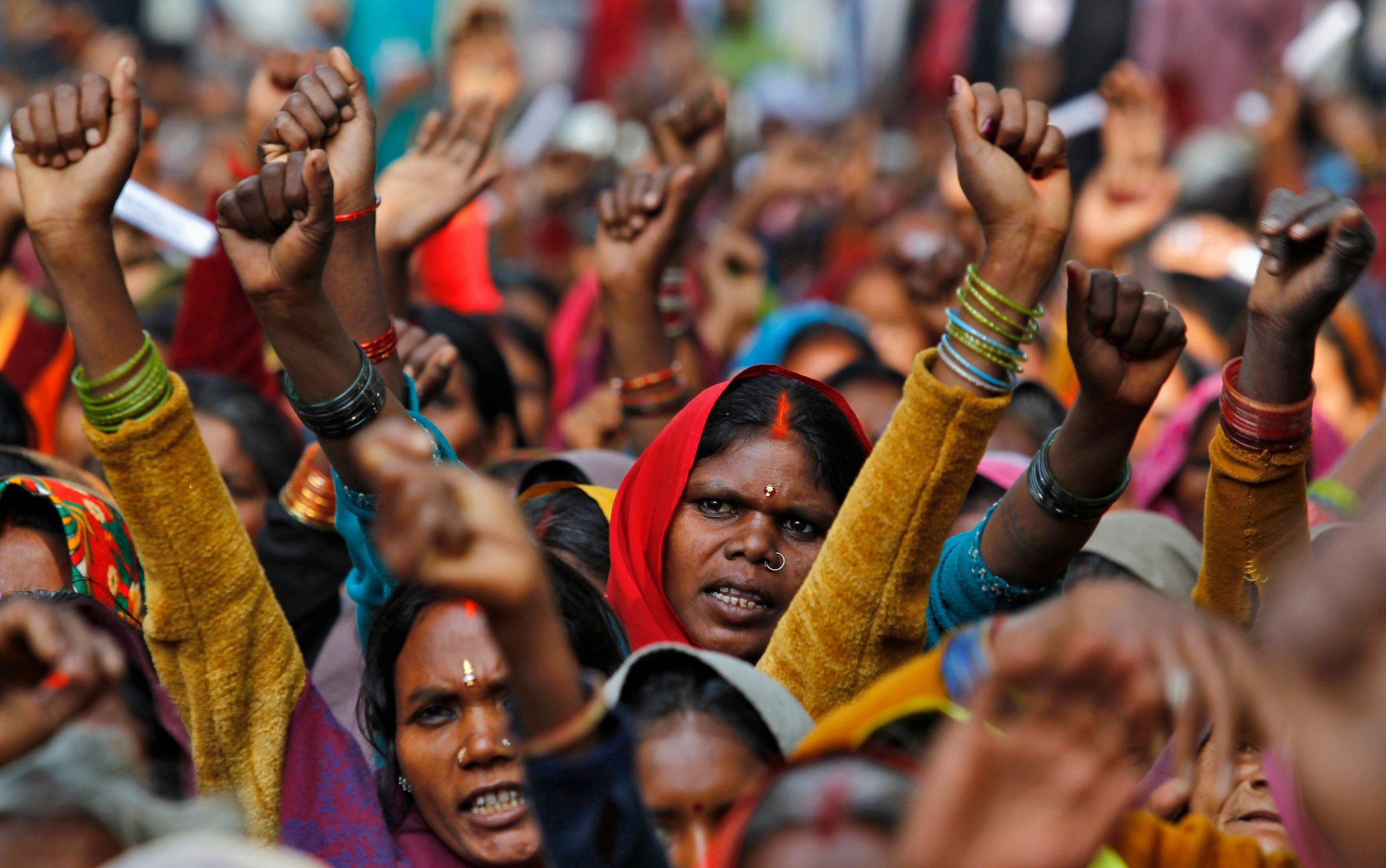
Courts in India have been able to shape policy by making sure their decisions are enforced. Kodiveri says that in general Indian courts have been creative in designing enforcement mechanisms, such as orders that seek to form specific committees to implement judgements, re-examine executive decisions or shape policy. In 1996, the Supreme Court of India ruled on the case of TN Godavarman Thirumulkpad vs Union Of India & Others. This was initially filed to protect forest in Nilgiris, Tamil Nadu, from timber extraction. The court’s judgement not only defined the term “forest” but also set up a committee that has the power to review environmental clearances granted by the government. Kodiveri describes the Godavarman case as “a great example of judicial enforcement”.
The judgement has been criticised by some researchers as judicial overstep, where the court effectively took over “day-to-day governance of Indian forests leading to negative social, ecological, and administrative effects”. Others have said it shows how courts can innovate to “fashion the law to find a way of protecting the environment using classical principles of judicial review”.
In Bangladesh, Kodiveri says, courts have been more receptive to cases that take into account concerns about people’s vulnerability as a result of global and historical emissions than cases that seek to hold the government accountable. In India, she says she sees more litigation based on constitutional rights like the right to life. To date, cases brought before courts have largely been restricted to constitutional rights like freedom of speech and expression, and freedom of movement. This July, India also supported a United Nations General Assembly resolution to recognise the right to a healthy environment as a human right.
In China, courts have played a significant role in shaping environmental policies, the IPCC’s April report notes. This is because of the availability of tools like public interest litigation, it adds.

The limits of litigation
Generally, litigation is a powerful tool to enforce existing legislation and policies. “In countries where courts are independent and are respected, they can bring about accountability,” Setzer says. But, she points out, if the executive and the legislative wings haven’t done their part, “it’s much more difficult for the courts to stand up and say ‘Do something’ because of the understanding that courts would then be interfering in the powers of the executive.”
The US, for example, historically has had no federal-level climate change law. And so, climate change litigation researchers say, “neither the federal courts nor any of the state courts have been receptive to pleas that, in the absence of adequate legislative or administrative action, they should step in and adopt their own rules of remission reduction or on liability.” The Biden administration’s recent Inflation Reduction Act is widely seen as a law that will help combat climate change; it aims to reduce emissions by 40% by 2030. But some organisations have pointed out that the law lacks specific emissions-reduction targets. They say that such targets are necessary for it to qualify as climate law.
In such a context, robust law- and policymaking can go much further in enabling climate action. “Policymaking is definitely the preferred tool because it’s a broader and a more straightforward approach,” says Maria Antonia Tigre, global climate litigation fellow at Columbia Law School’s Sabin Center. “Litigating takes time but it can help as a last resort, like in cases where regulatory policies haven’t worked or to address the urgency of broad emission-reduction needs.”
Litigating can help as a last resort, in cases where regulatory policies haven’t worked or to address the urgency of broad emission-reduction needsMaria Antonia Tigre, Columbia Law School’s Sabin Center
An increase in litigation may not in and of itself indicate progressive change. The US has by far the most climate litigation of any country in the world – but much of this is brought by companies working against regulations to mitigate climate change. “There is a split between litigation that is aligned with climate change goals and those that directly challenge them,” Setzer says.
Reviews of global litigation outcomes point to similar conclusions. Research by the GRI found that of 369 decided cases, only 58% were favourable to the fight against climate change, while 32% were unfavourable and the remaining 10% had no clear impact on climate policy.
Litigation can also backfire. “There can be political bias in how judges rule,” Kodiveri says. It also entails costs to vulnerable petitioners like local communities, both in terms of time and money. “Cases can stagnate for decades because litigation doesn’t always allow for [dispute] resolution,” Kodiveri points out, adding that policy decisions can work faster, especially at the local administrative level.
Institutions and policymaking are vital
“In some countries, litigation has been used to spur further, deeper climate action. But the form that the action takes is typically shaped by institutions and policymaking,” says Navroz Dubash, professor at New Delhi-based think tank the Centre for Policy Research and coordinating lead author of the chapter National and Sub-national Policies and Institutions in the IPCC’s mitigation report. Institutions play a major role in enabling mitigation action, in terms of research support for law and policymaking, governance in terms of coordination between various stakeholders like the ministries involved and post-implementation tracking of progress.
“Many climate decisions are shaped by decisions on urban planning and industrial policy and even economic stimulus packages,” says Dubash. A key message of the IPCC’s mitigation report is that climate policy should be integrated within other spheres and development pathways.
The IPCC report on mitigation provides numerous case studies on integrated policymaking for sector-specific transitions. This includes the provisioning of mobility services in Kolkata, LPG subsidies in Indonesia and policymaking in Shanghai. The case studies highlight the kind of policies that are needed and existing barriers and enablers to such policies.
The form that climate action takes is typically shaped by institutions and policymakingNavroz Dubash, Centre for Policy Research
“It’s not enough to just put a price on carbon,” Dubash says. “You have to provide actors incentives and disincentives and a package of policies.” In building such development pathways, the IPCC says carbon can be locked in, especially around land use or infrastructure choices – crucial for developing countries where roads, railways and cities are still being built.
The role institutions play varies widely by geography. In Europe, it is becoming more common to see climate change laws with binding emissions targets which are backed by institutions like the UK’s Climate Change Committee. On the other hand, Dubash explains, institutions in China are governed by much more vertical, hierarchical structures while the US seems to have multiple veto points where climate action by institutions can be blocked, such as the Supreme Court’s ruling in June to curb the Environmental Protection Agency’s powers to regulate emissions.
Ultimately, there may be no one-size-fits-all approach, be it in the litigation space or law and policymaking, to enable climate action. “Each country has to tailor mitigation action to suit its realities,” says Catherine Mitchell, the other coordinating lead author of the chapter on policies and institutions in the IPCC report on mitigation.
Editor’s note: This story was developed as part of a journalism residency programme at Max Planck Institute for Comparative Public Law and International Law in Heidelberg, Germany
Additional reporting by Natalie Taylor
